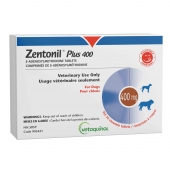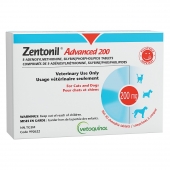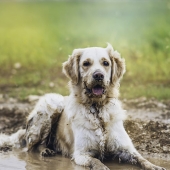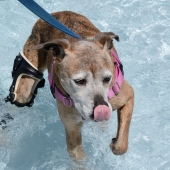Periodontal disease (commonly called gum disease) is likely the most common medical condition veterinarians see in pets, affecting 4 out of 5 dogs over 2 years old. Despite how widespread the disease is, its complications can be prevented when symptoms are recognized early. Here are a few things you should look out for:
1. Your dog has bad breath
It may sound surprising but a dog’s breath shouldn’t naturally smell bad. Unfortunately it’s common for dogs to have foul breath as the majority of them suffer from periodontal disease. The pungent odour could indicate an infection in the pet’s teeth or gums.
2. Your dog’s teeth show calculus
After your dog eats, sugars within the food mix with the bacteria in their mouth to create plaque. Unless it’s brushed away, plaque later mineralizes and becomes a hard, porous substance called calculus. By the time calculus is visible on your dog’s teeth it’s only a matter of time before it expands and reaches the gum line, which is often the first step leading to more problems.
3. Your dog’s gum line seems red, swollen or bleeding
Once the bacteria nested within the calculus reach the gum line, they can cause gingivitis, an inflammatory reaction that makes the gums appear red and swollen. Over time the gums may even start to bleed, creating a vulnerable entry point that allows bacteria into your dog’s bloodstream.
4. Your dog has loose teeth
As gingivitis worsens, gum tissue recedes which can cause teeth to become loose or lead to exposed tooth roots. Once the bone and tissue surrounding the teeth become too fragile, the damage becomes irreparable and loose teeth must be extracted.
5. Your dog has trouble eating
As the pain worsens, your dog may have trouble picking up food with their mouth or start chewing using only the pain free side of the mouth.
6. Your dog sneezes or has nasal discharge
In some cases, periodontal disease or the loss of an upper tooth may cause an abnormal opening to appear in the roof of your dog’s mouth, between their oral and nasal cavity. This can lead to frequent sneezing and nasal discharge, as well as chronic infections.
Your dog may be hiding their pain
While gum disease starts to hurt very early in its progression, it can be difficult to recognize your dog is in pain. Most pets have a natural instinct not to show weakness and to hide their pain. In the wild, such animals can appear as easy prey to predators, or be left behind by their pack, and this natural behaviour remains ingrained in many pets.
How you can prevent gum disease
Starting dental care early and brushing your dog’s teeth daily (or as a minimum, two or three times per week) is the best way to prevent plaque from turning into calculus, the very first step in gum disease. Regular oral exams by your veterinarian can help diagnose periodontal disease early so you can act quickly to preserve your dog’s dental health.






